| Hollywoodland | Nov 12 2017 |

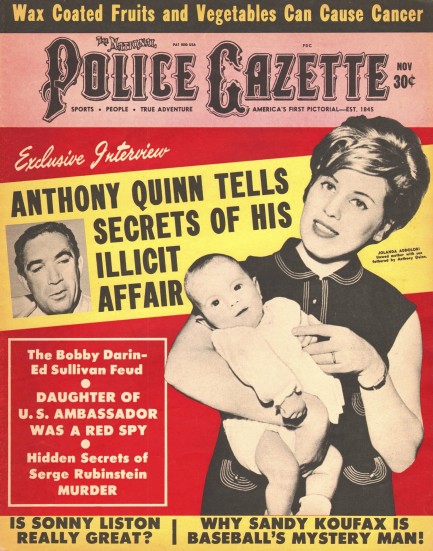
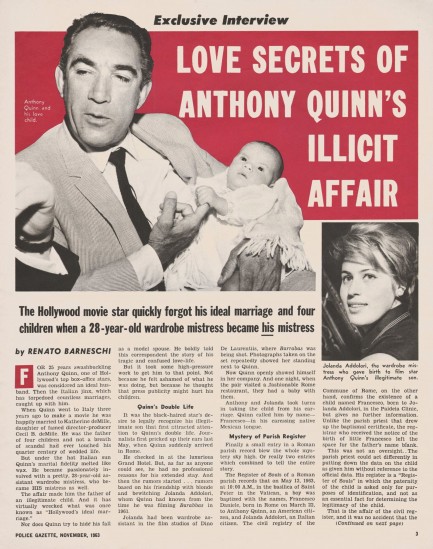
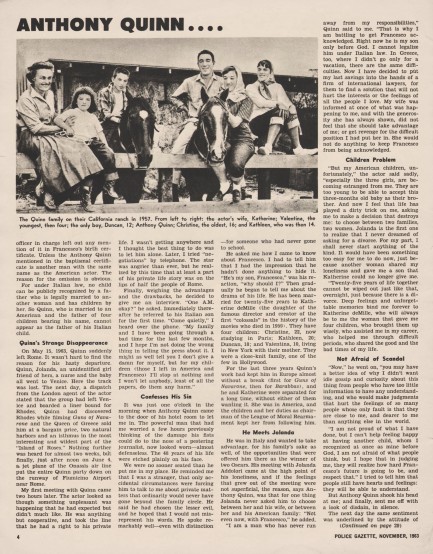
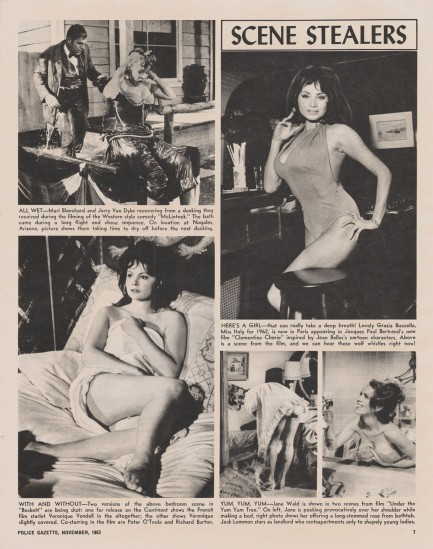
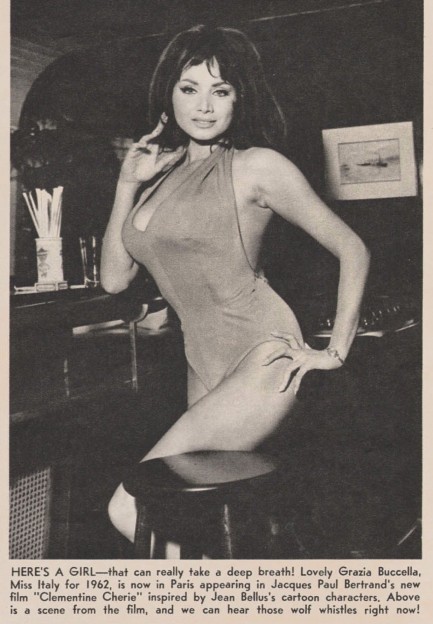
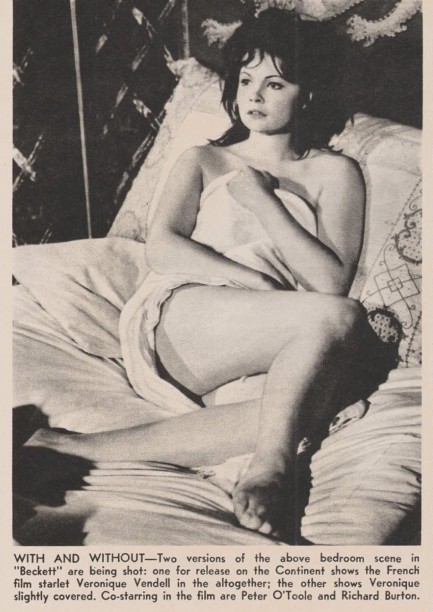
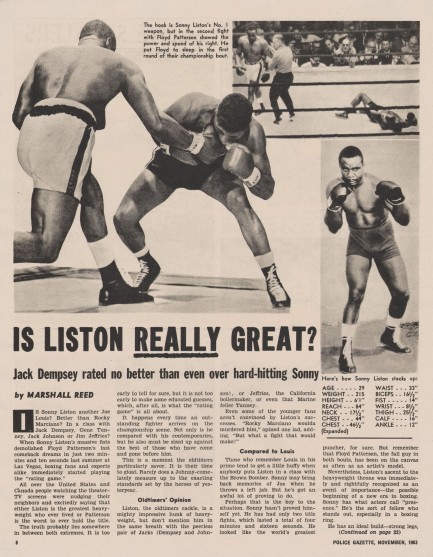
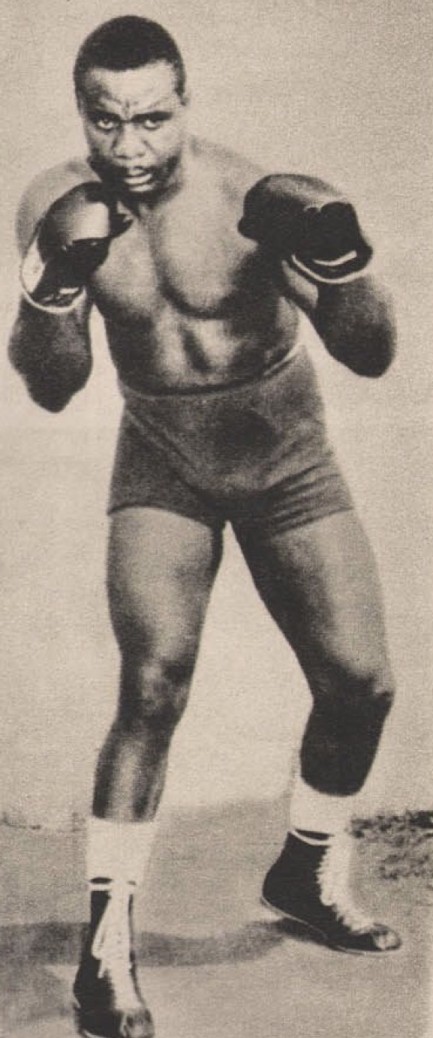
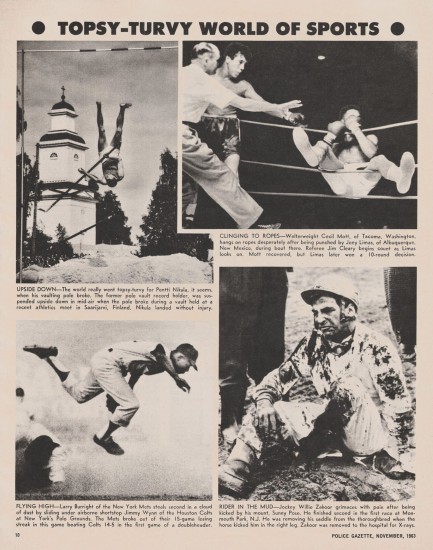
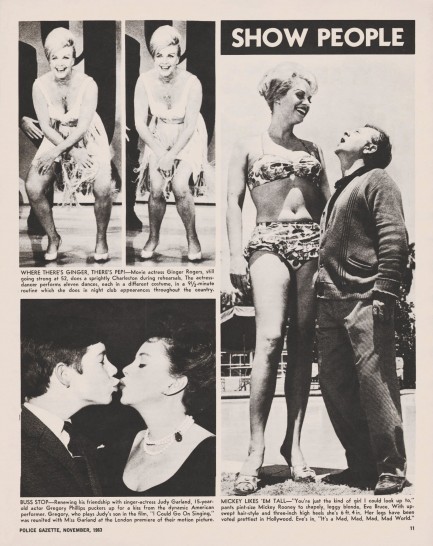
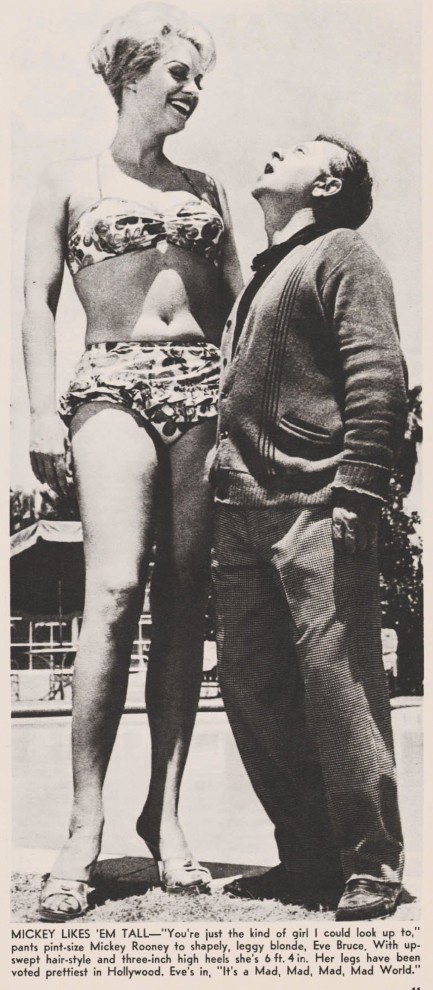
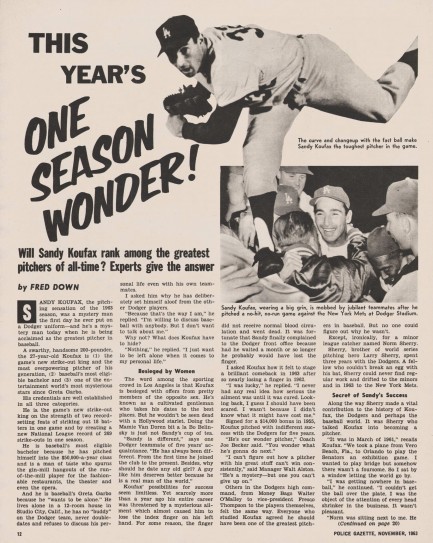
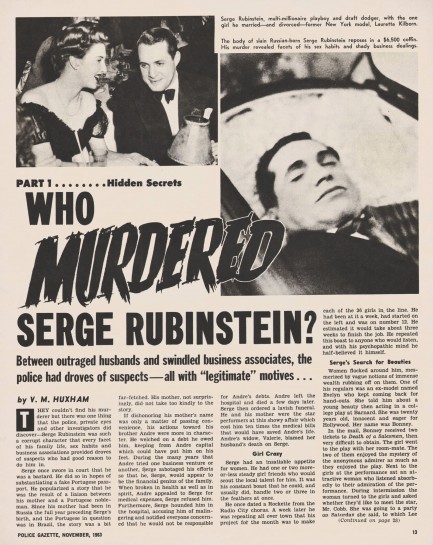
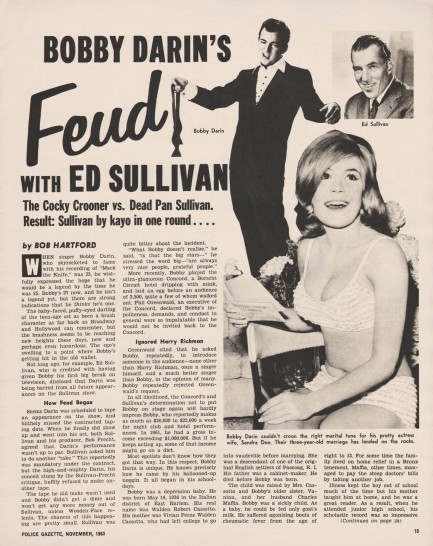
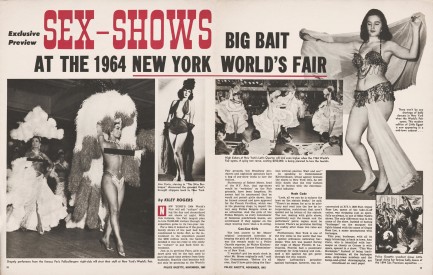
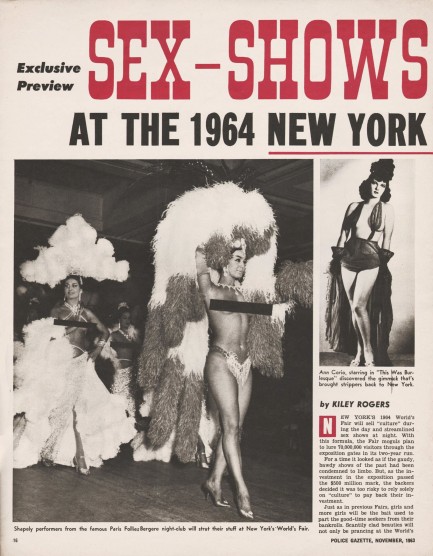
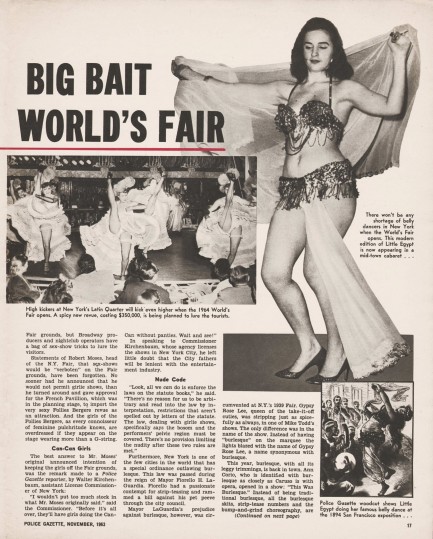
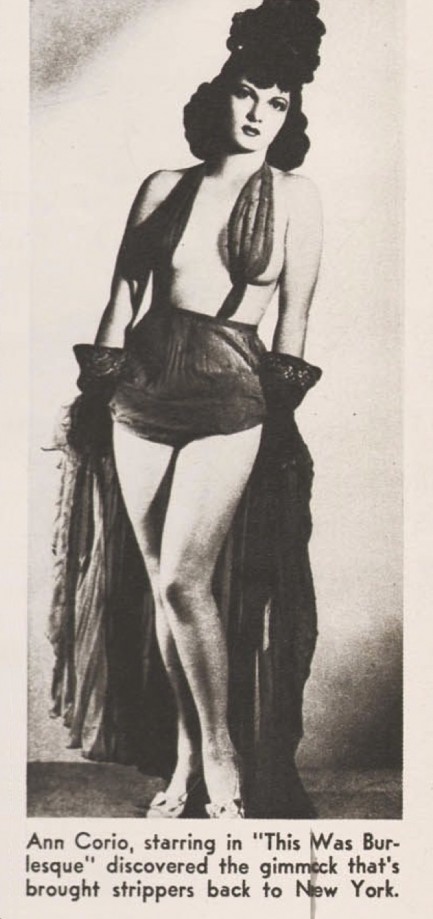
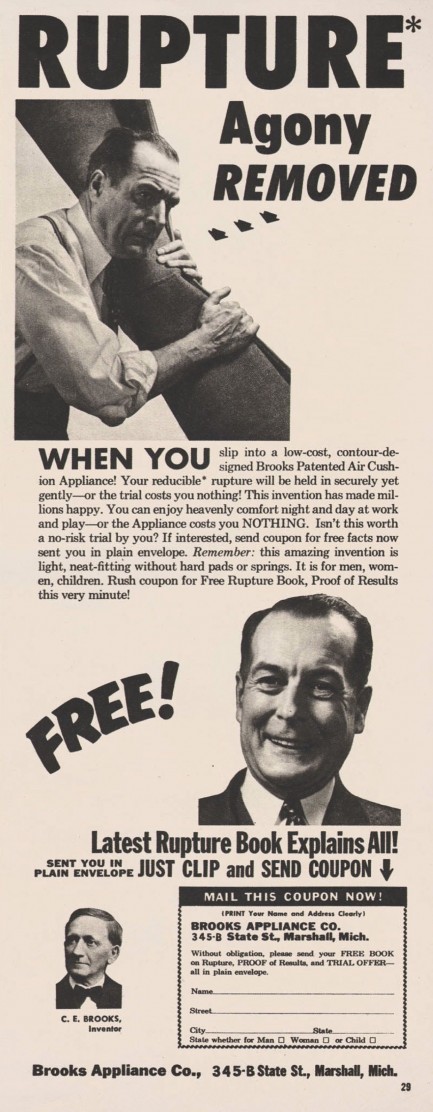
| Vintage Pulp | Aug 4 2014 |

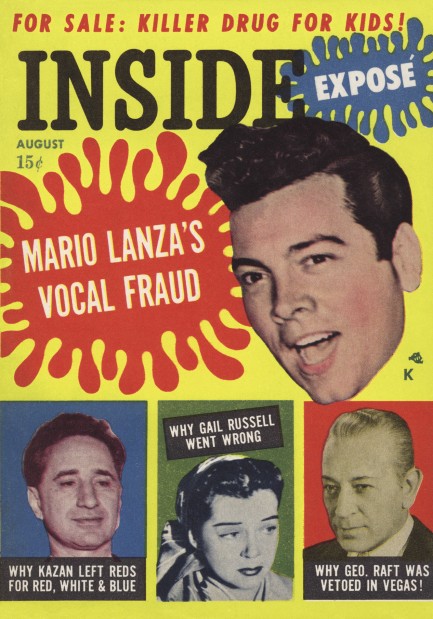
Here’s a new addition to the ever expanding roster of mid-century tabloids on Pulp Intl.—Inside, which we mentioned in relation to our post on Liberace a while ago. Inside was a pocket-sized magazine that came to newsstands in 1955 thanks to New York City’s Dodshaw Publishing Corporation. It seems to have lasted only three years. This August 1955 issue, which was originally scanned and uploaded by Darwin’s Scans, features singer Mario Lanza, filmmaker Elia Kazan, and actors George Raft and Gail Russell, among other subjects. Because the print in a pocket publication is readable when scanned and enlarged, we’re going to let you check out the stories yourself. You can read a bit more about Inside here. Enjoy.
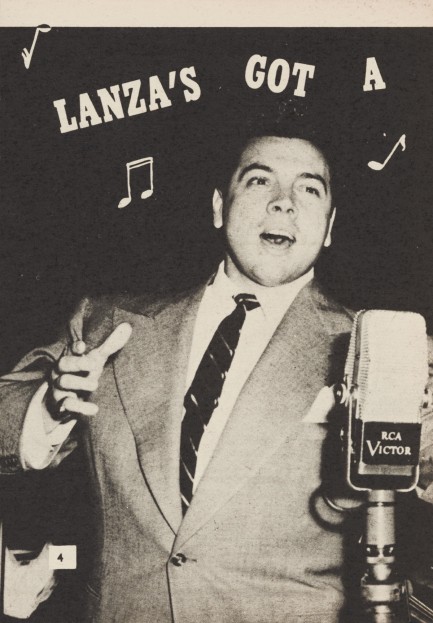
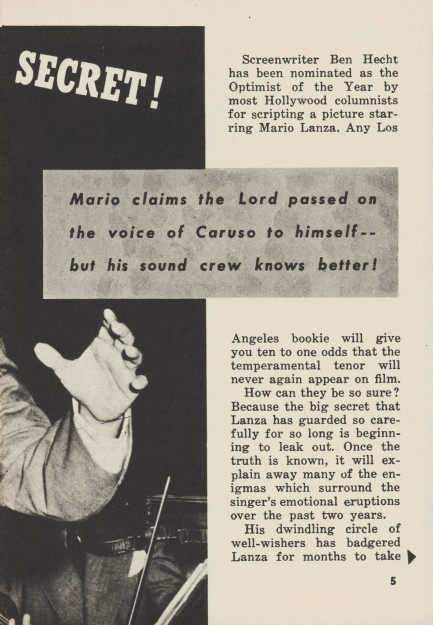
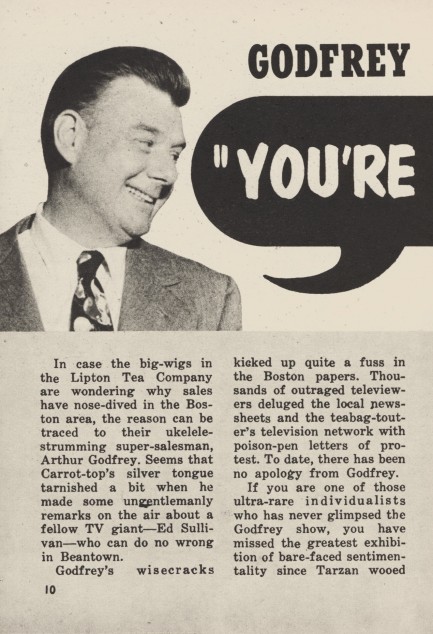
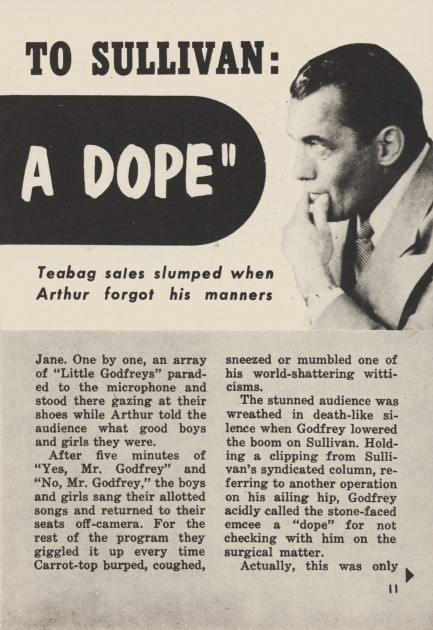
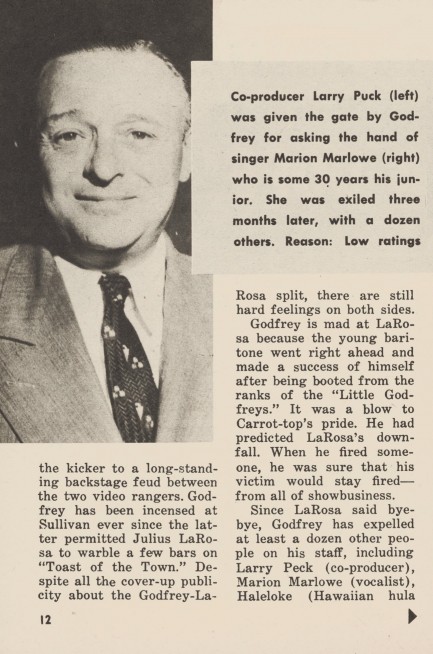
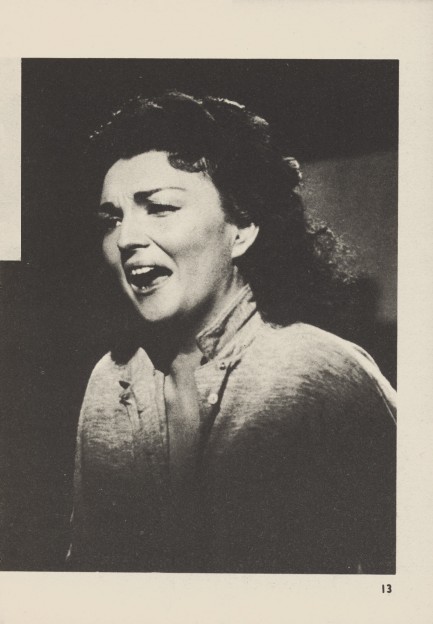
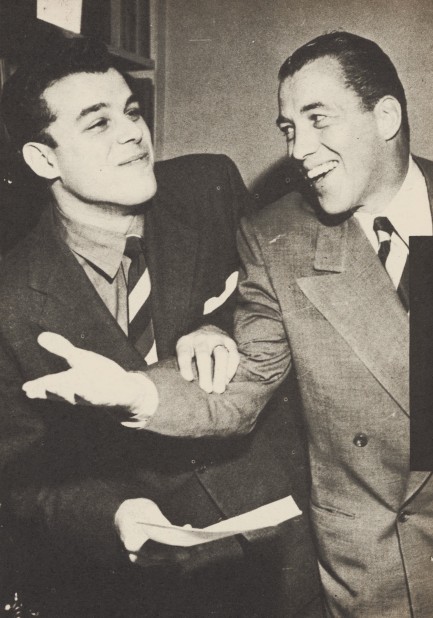
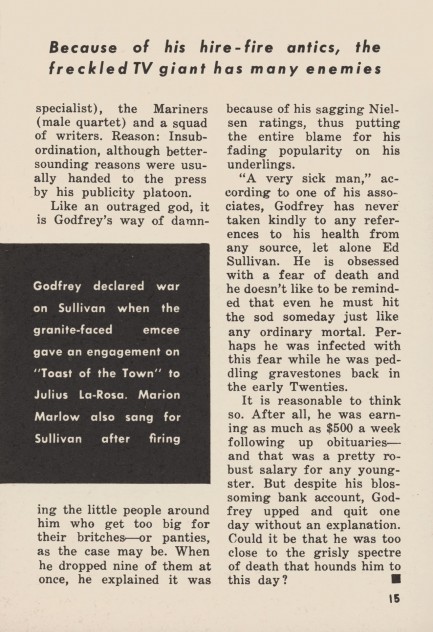
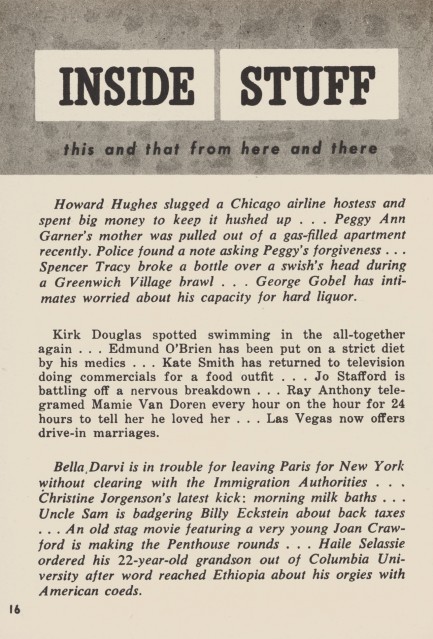
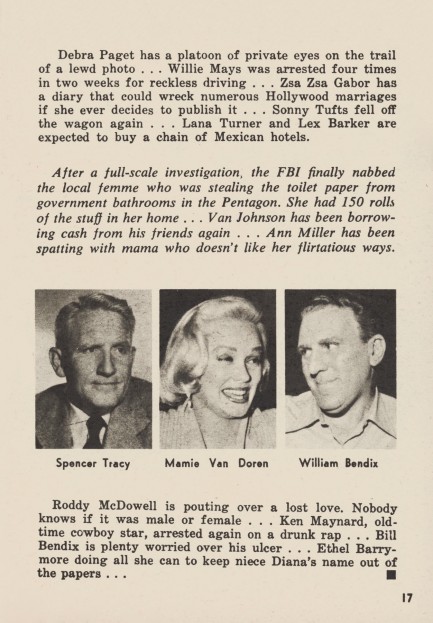
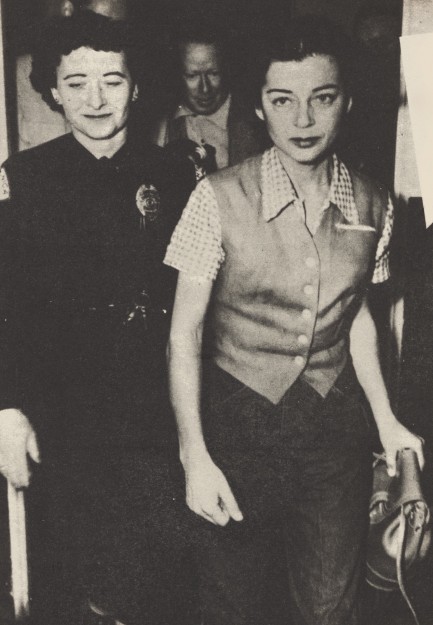
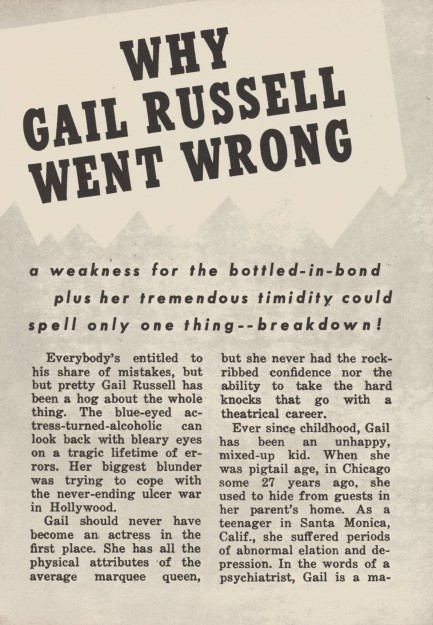
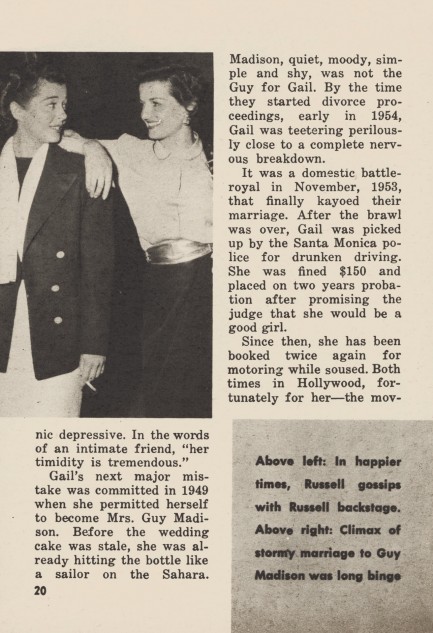

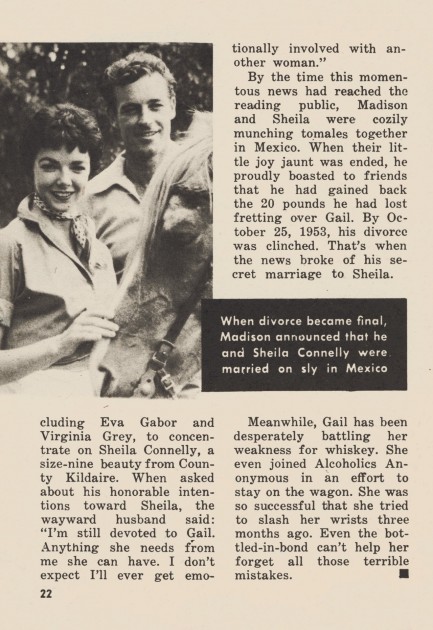
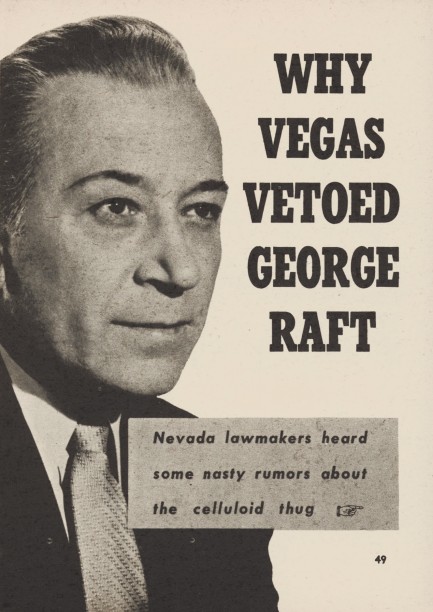
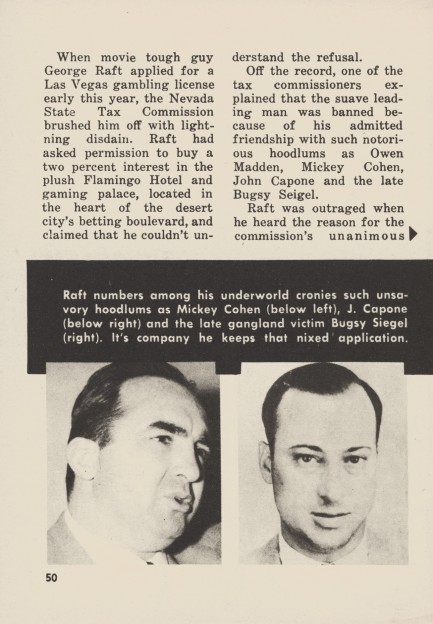
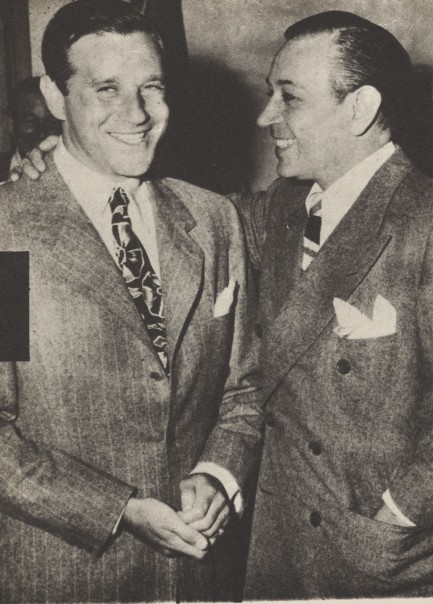
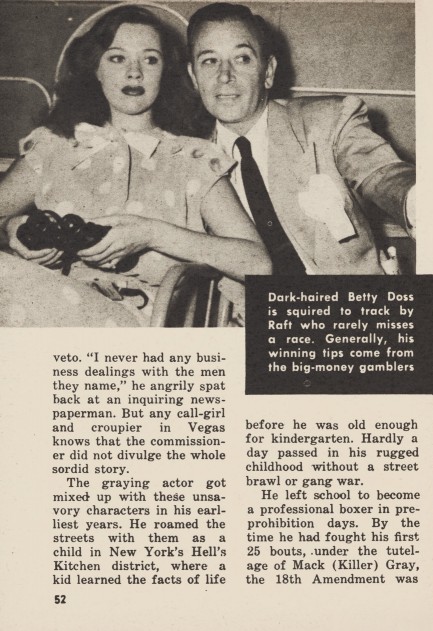
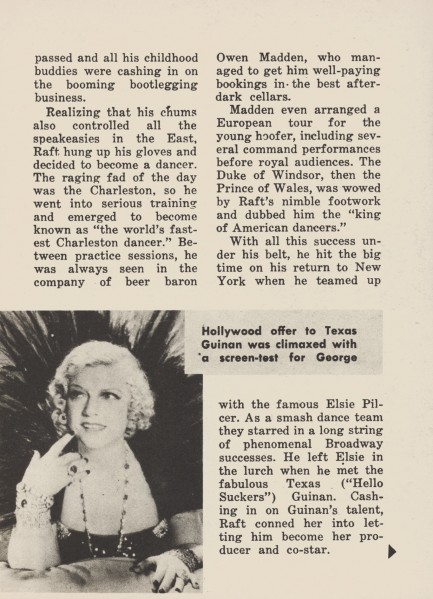
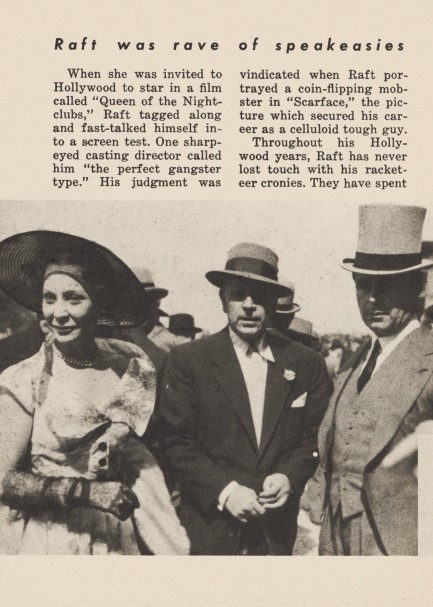
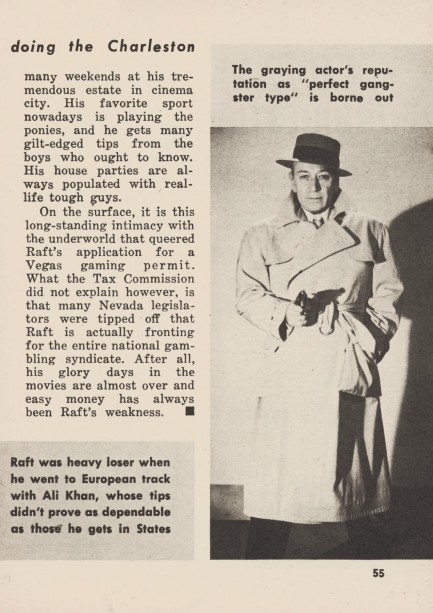
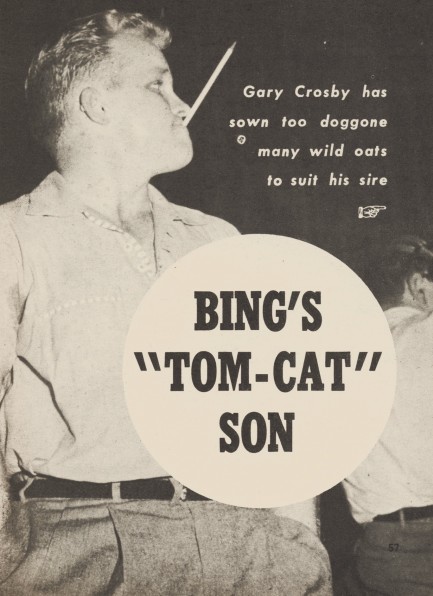
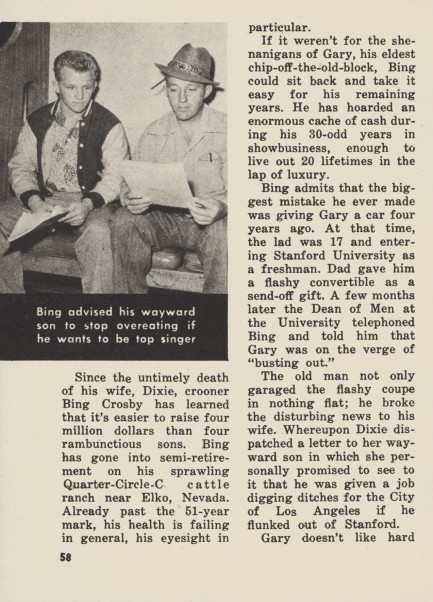
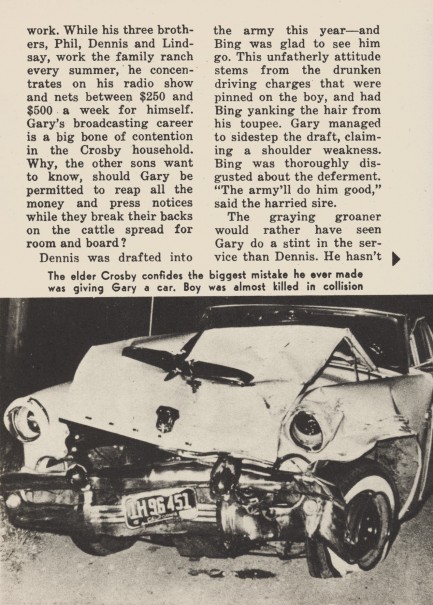

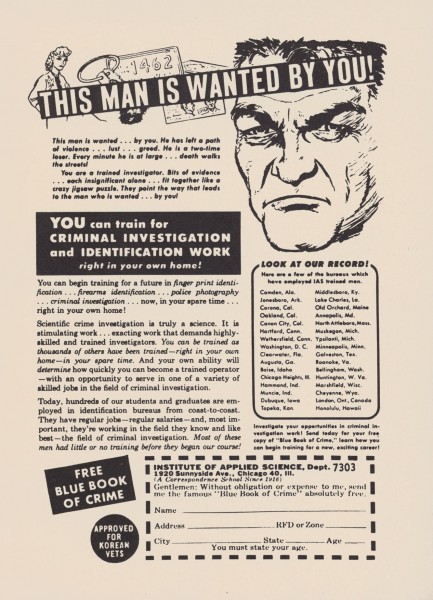
| Hollywoodland | Sex Files | Mar 13 2013 |

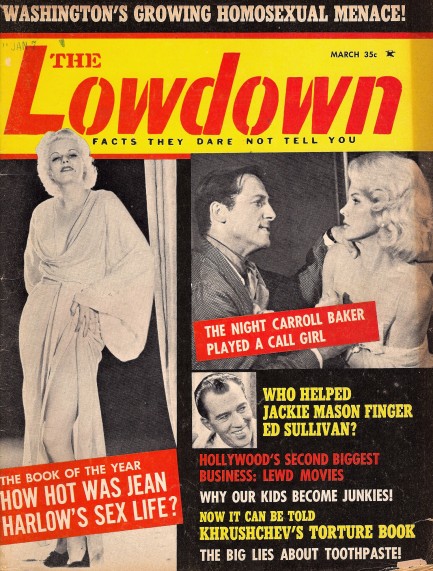
We’re jumping right into our treasure trove of newly arrived tabloids today with a glance at this issue of The Lowdown published in March 1965. On the cover you see Jean Harlow, Carroll Baker, and Ed Sullivan. We talked about Baker recently and there she is in that crazy gown again (below)—or is she? No, on close examination this is yet another version of the dress. Clearly, the photo was shot on a different night than all the others because her hair and jewelry are different. But the actual dress also looks slightly different from both the Oleg Cassini and Pierre Balmain iterations. A reference in the story clears things up at least a little: “Transparency gowns are another of her big passions and she often wears them.” There you have it. Half naked was a fairly standard look for Carroll Baker. They just don’t make stars like they used to.
You might be curious what the article is about. On the cover the header reads: “The Night Carroll Baker Played a Call Girl,” but on the inside, it says: “The Night Carroll Baker Played a Harlot!” The story goes that she wanted to research her role as a prostitute in the movie Sylvia, so she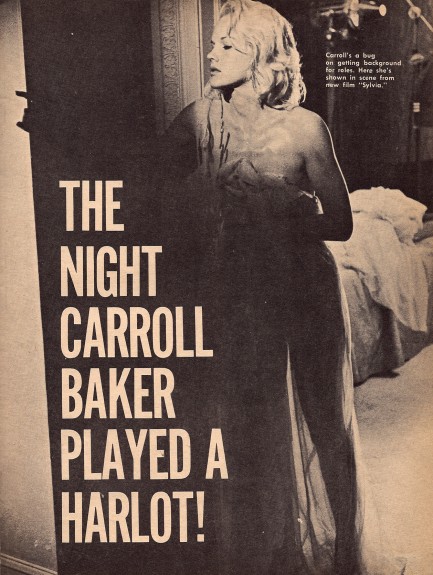
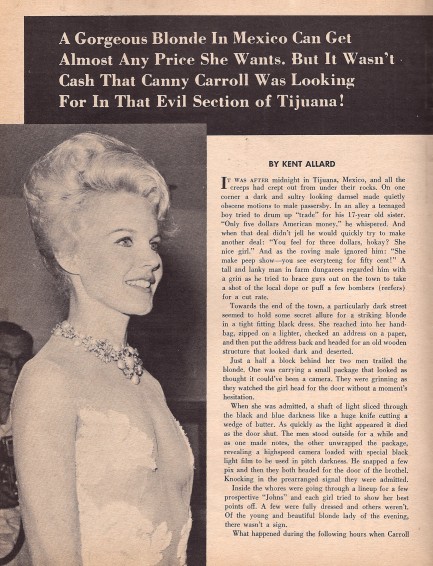
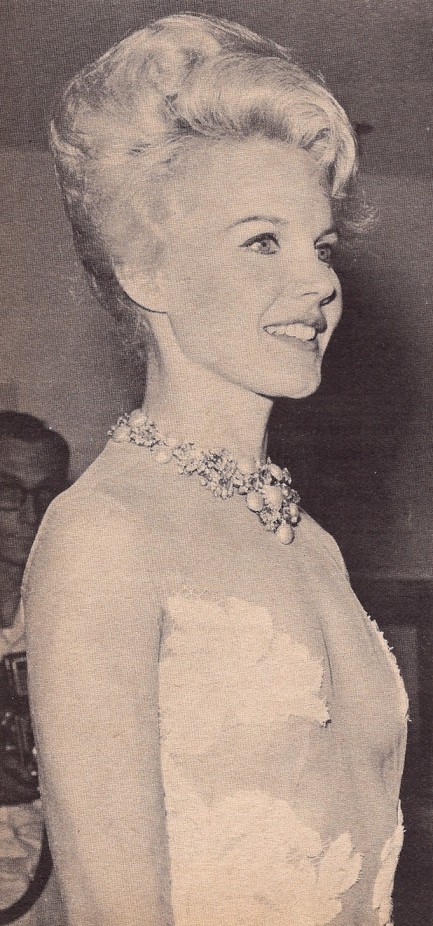 ventured down to Tijuana, Mexico, toured a few brothels, and somehow disappeared alone for two hours: “We don’t know what happened in the house in Mexico or what sights she could have barged in on, but that is bouncy Miss Baker’s bit.” Lost in a Mexican whorehouse. The mind reels. Do we buy it? Not for a minute.
ventured down to Tijuana, Mexico, toured a few brothels, and somehow disappeared alone for two hours: “We don’t know what happened in the house in Mexico or what sights she could have barged in on, but that is bouncy Miss Baker’s bit.” Lost in a Mexican whorehouse. The mind reels. Do we buy it? Not for a minute.
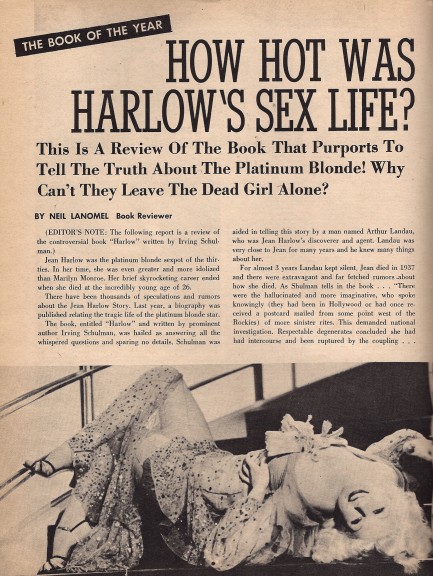
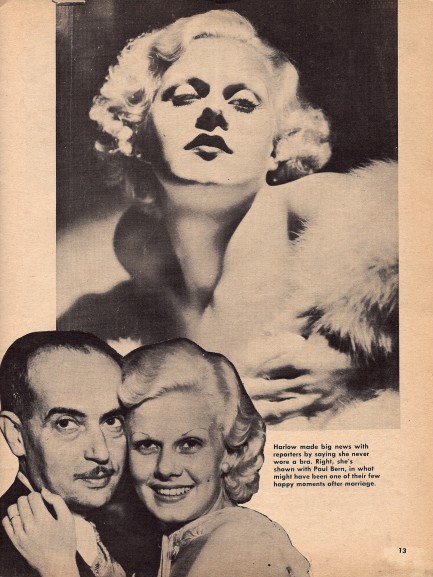 was one especially bad bruise directly over her kidneys.” The implication here is because Harlow died several years later of kidney failure that she incurred the fatal damage during that wedding night beating. It gets weirder—brace yourselves. Landau goes to Paul Bern’s house, geared for a confrontation:
was one especially bad bruise directly over her kidneys.” The implication here is because Harlow died several years later of kidney failure that she incurred the fatal damage during that wedding night beating. It gets weirder—brace yourselves. Landau goes to Paul Bern’s house, geared for a confrontation: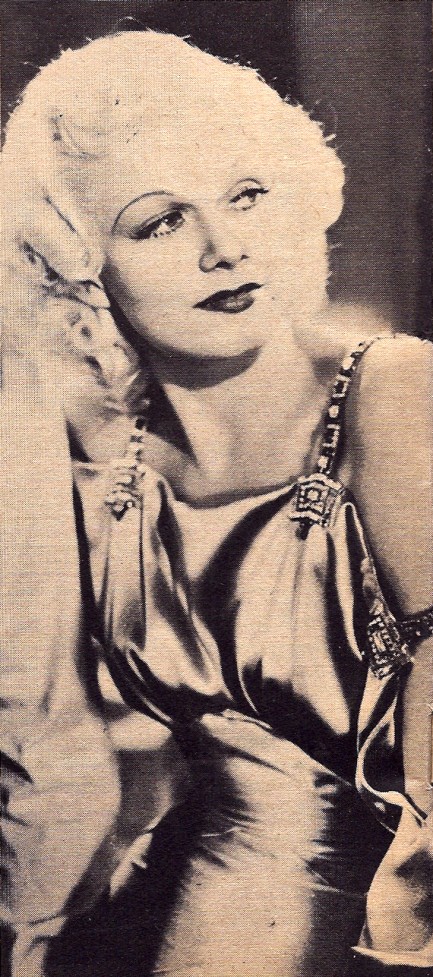
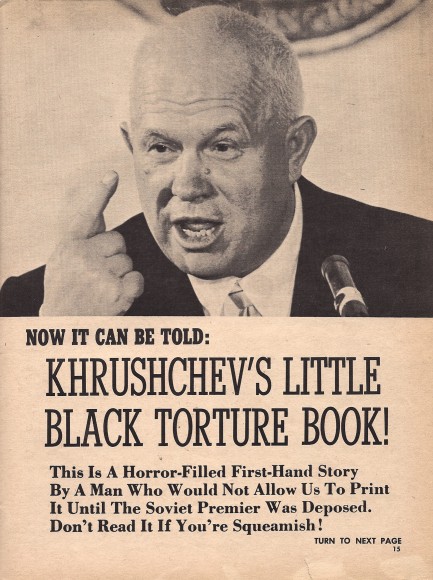
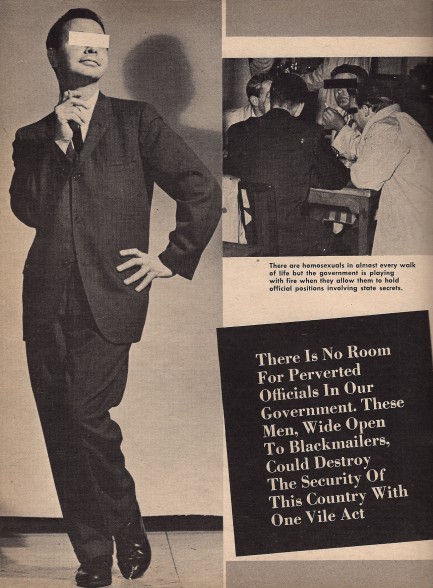
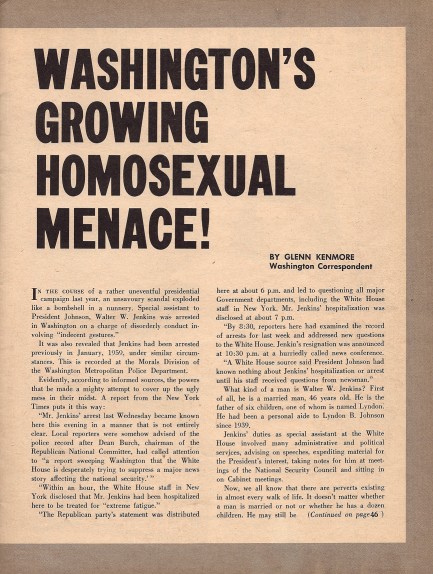
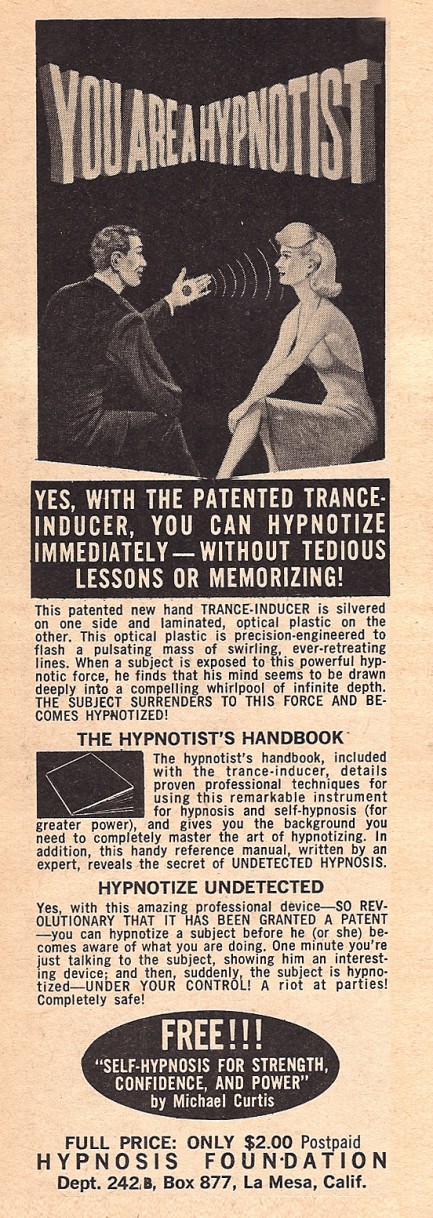

| Hollywoodland | Jul 27 2012 |

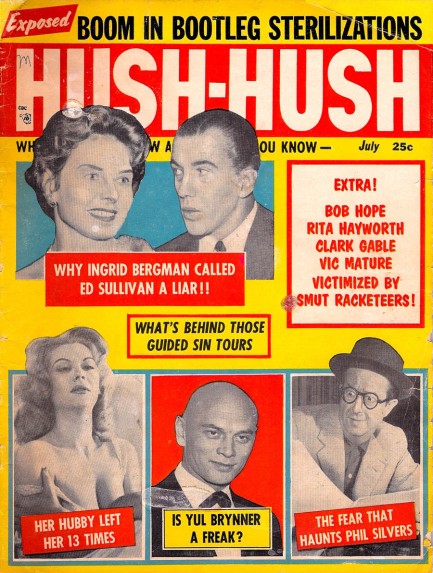
It’s been a while since we’ve featured Hush-Hush, but it’s one of our favorite high-end mid-century tabloids, so today we have a newly scanned issue from this month 1957. We learn that Ingrid Bergman called Ed Sullivan a liar for falsely claiming she was booked on his show, and that Phil Silvers was terrified that he would lose his fame, and that Eartha Kitt was destined to forever be lonely because she was interested only in white men.
But the fun story here is the one headed: “Movie Stars Victimized By Smut, Inc.” The article is about Tijuana bibles, and the many celebs who had been unknowingly featured in them. We’ve already posted a few bibles, thus you probably already know that they’re pornographic eight-page comic booklets sold clandestinely in drug stores and soda fountains. Their makers felt free to borrow the likenesses of public figures of the day, and Hush-Hush offers up examples starring Bob Hope, Marie Wilson, Robert Mitchum and others. The article describes them as “unbelievably filthy booklets showing the basest sexual acts and perversions.”
Well, true enough. Their distribution was so worrisome that the FBI got involved, and while the feds did manage to make some arrests, the flow of booklets remained pretty much uninterrupted. We can only assume that Hush-Hush’s exposé made them even more popular, which is kind of how it works with porn, right? Someone gets on their soapbox about it and people walk away thinking, Hmm, I better see one of these with my own eyes. Of course, Hush-Hush didn’t dare reprint the interior pages, but we have no such inhibitions here at Pulp Intl. See the next post, and see here.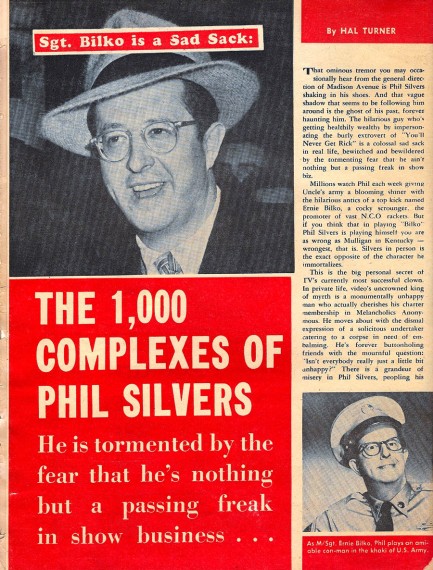
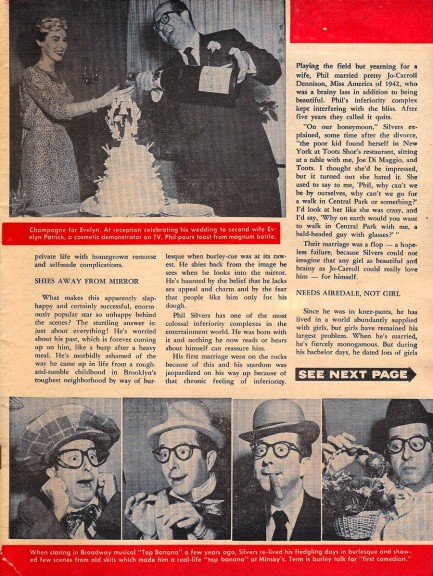
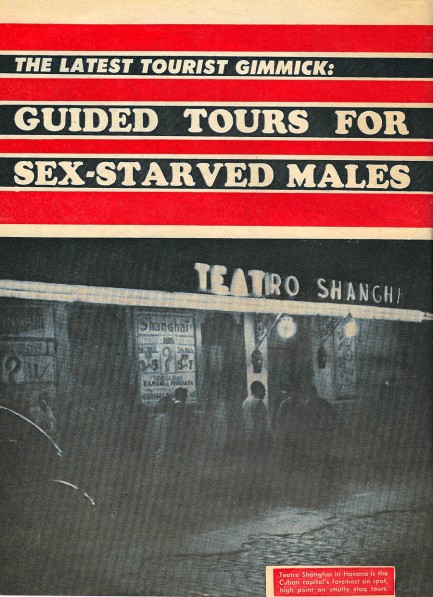
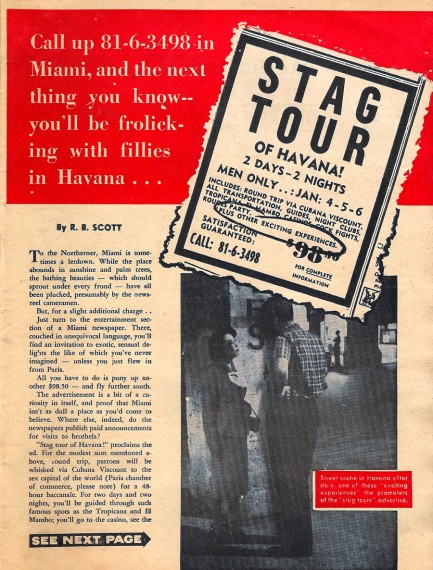
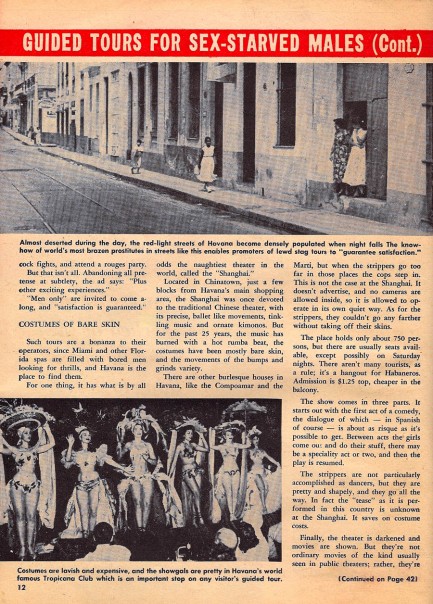
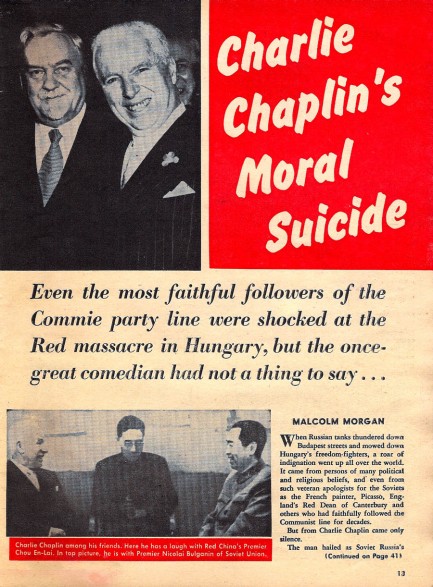
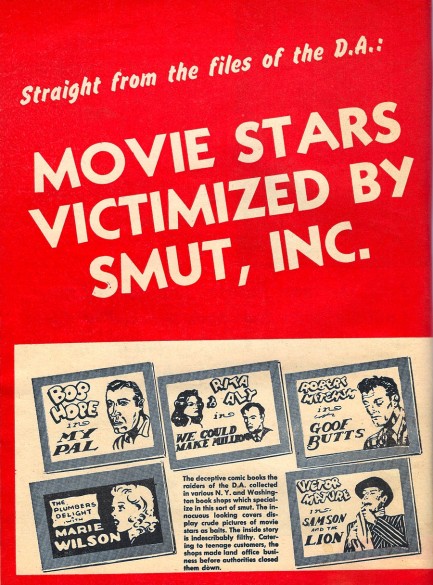
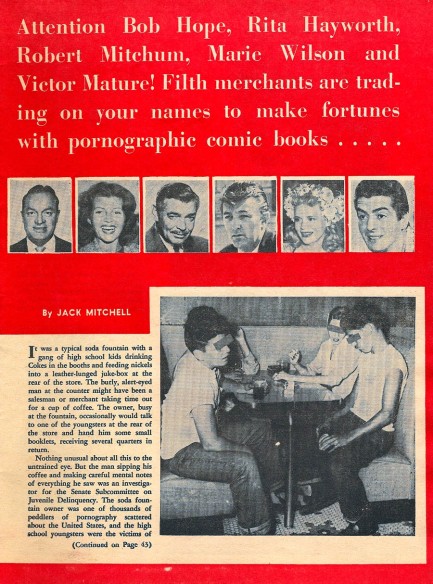
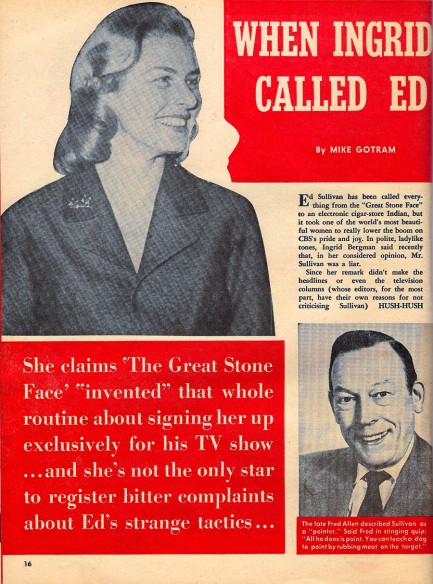
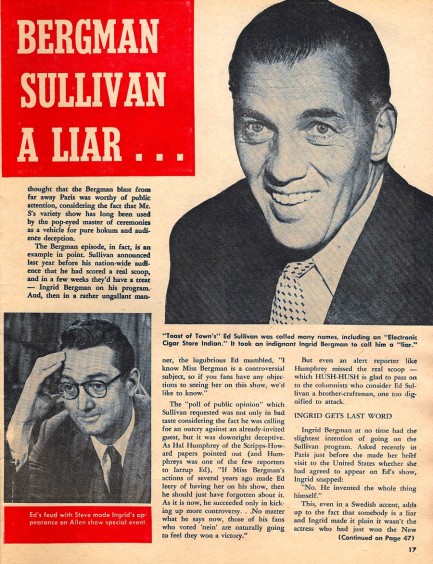
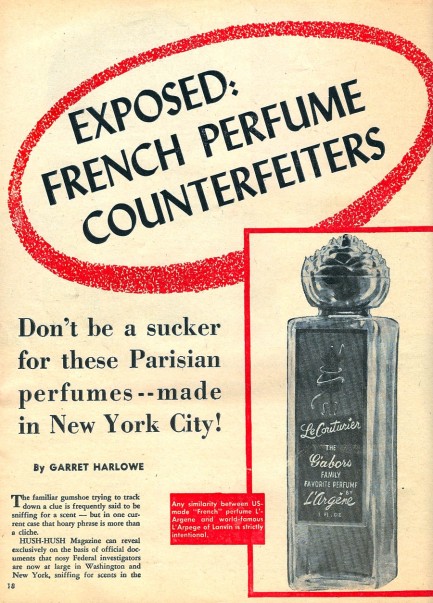
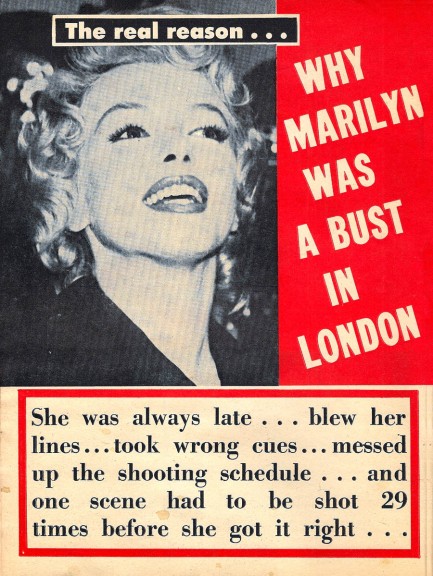
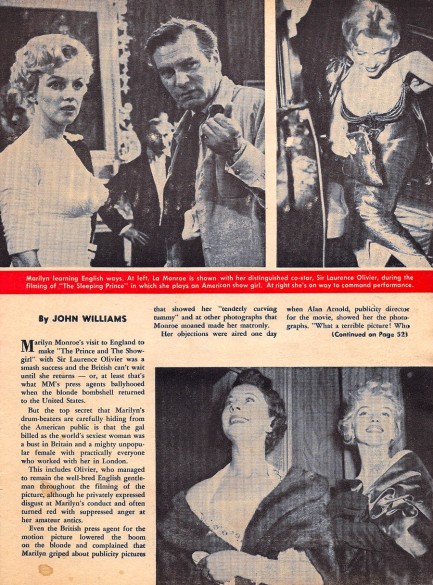
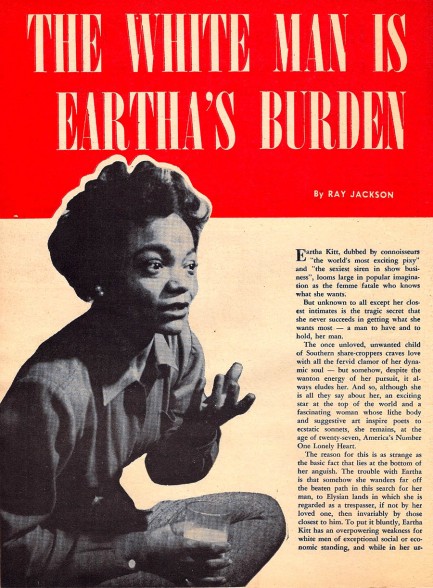
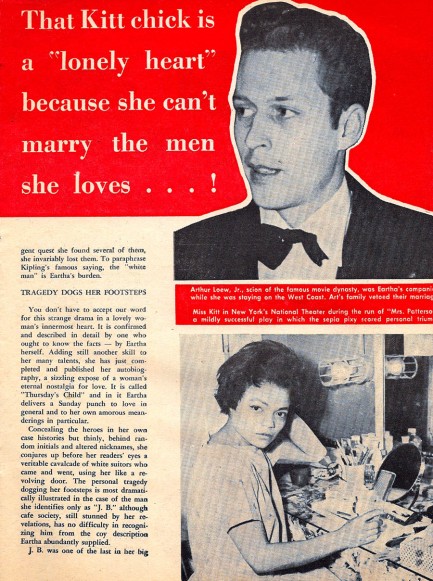
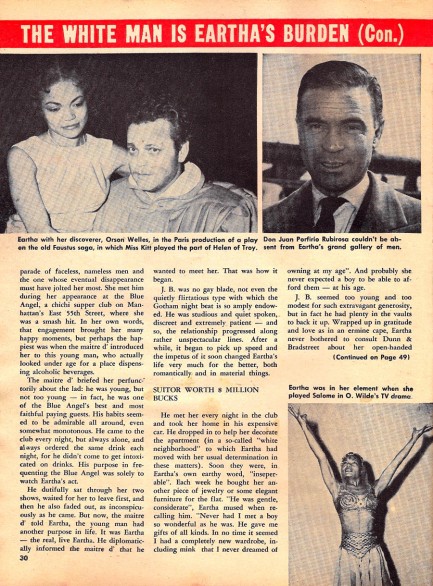
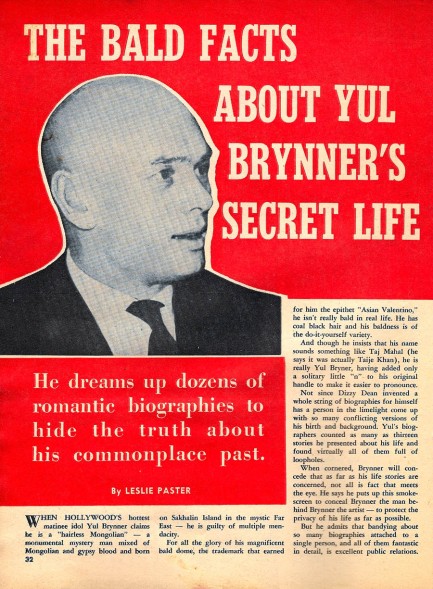
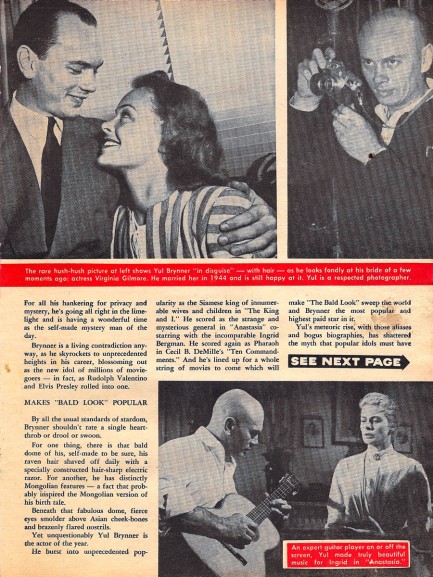
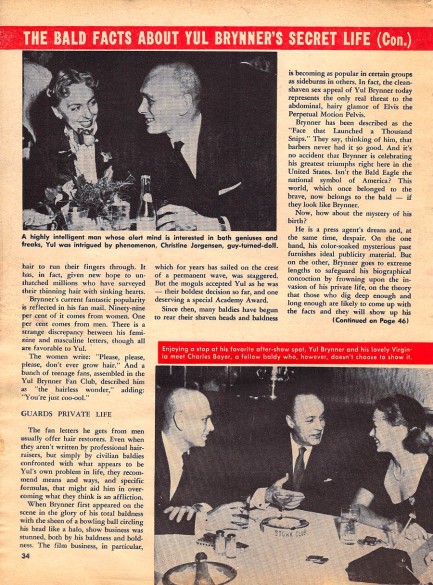
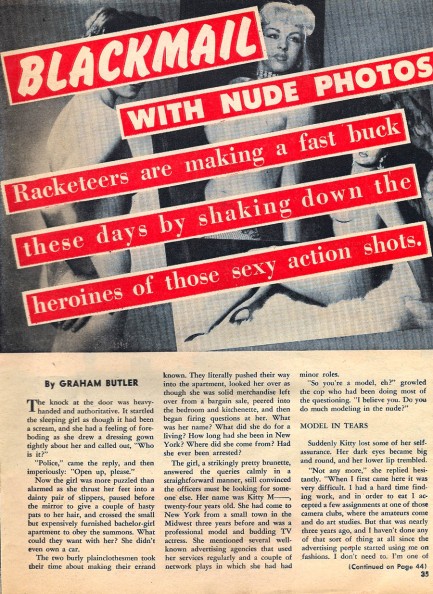
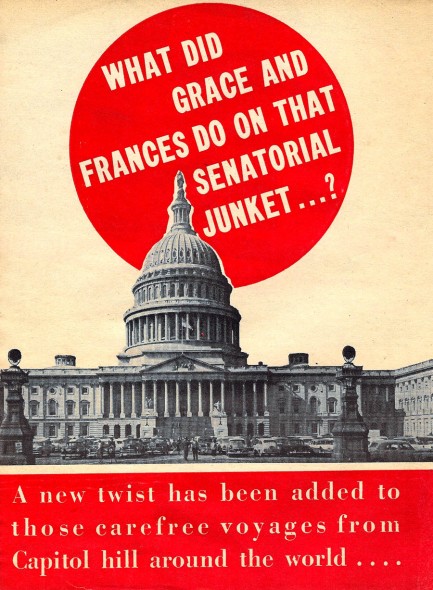
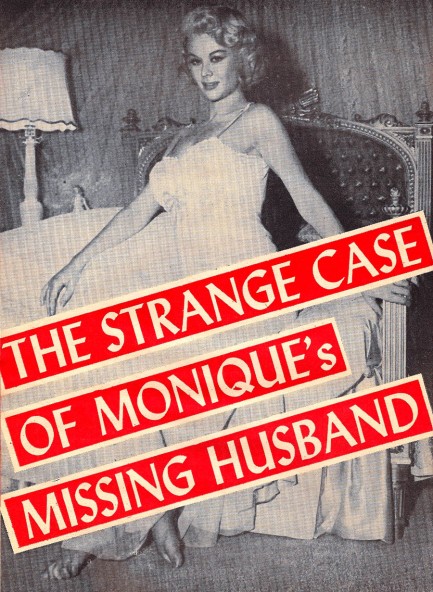
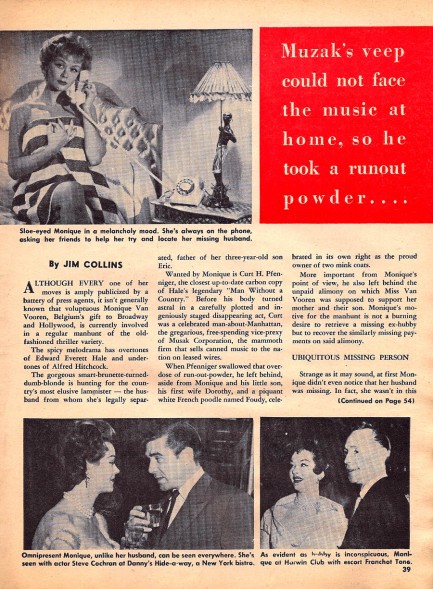
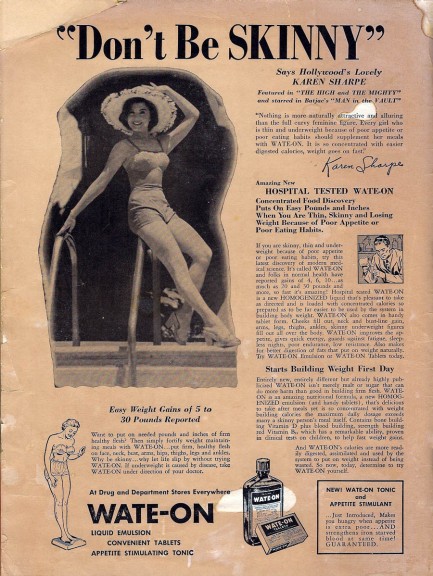
| Vintage Pulp | Mar 15 2011 |

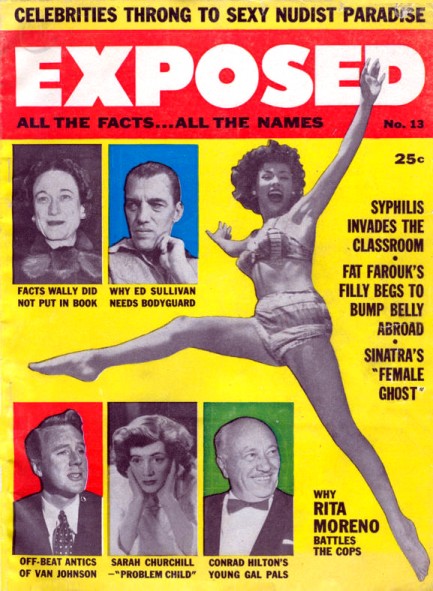
Today we have another copy of the tabloid Exposed, this one from March 1957 with a nice shot of actress and dancer Rita Moreno on the cover. The text beneath her claims she battles the cops, and inside she’s referred to as a “cop fighting wildcat.” Why? Because in June 1955 Moreno slapped an LAPD officer three times across the mouth and kicked him because he was arresting her boyfriend George Hormel II for marijuana possession. It’s lucky for Rita the taser hadn’t been invented yet. If it had, we suspect she would have learned the electric boogaloo the hard way. In any case, she got away with it and has gone on to sustain her screen and stage career over five more decades, winning multiple awards and earning a star on Hollywood’s Walk of Fame.
| Hollywoodland | Oct 14 2010 |

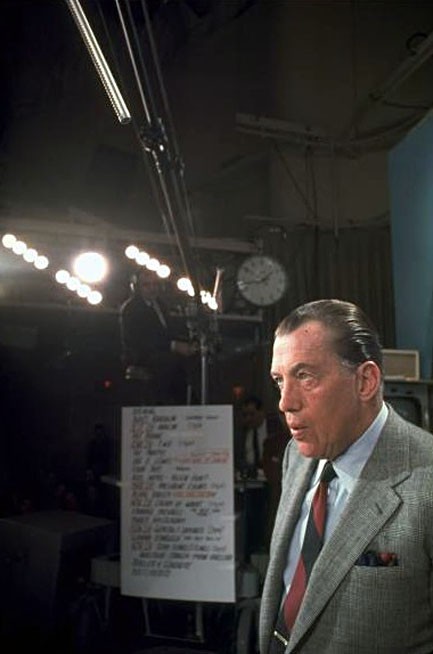
Above, a photo of American television host Ed Sullivan. Sullivan first went on air in 1948 hosting Toast of the Town, a New York City-based variety show. The reviews were scathing. Yet Sullivan quickly became a popular personality, although his many critics pointed out that he had no personality. Nevertheless, he remained on television until 1971, still based in NYC, entertaining home viewers and breaking new acts in comedy, music and cinema. But no career is without bumps. Sullivan collaborated with red-baiters and feuded with performers and peers. A complex and, according to many, even unknowable figure, Sullivan died of esophageal cancer at age 73, yesterday in 1974.
| Hollywoodland | Jul 6 2009 |

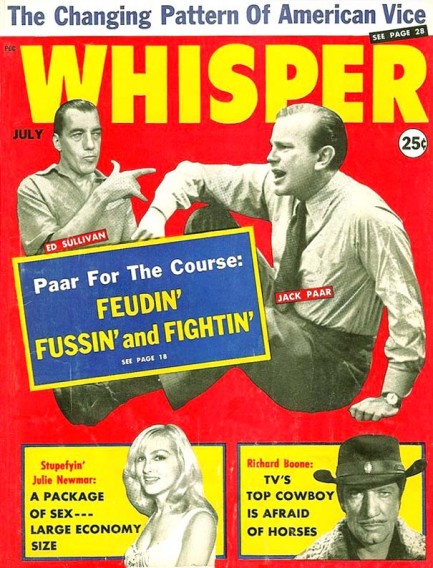
Above you see a Whisper magazine cover from July 1961. We mentioned in our previous post on this tabloid that it was published by Confidential owner Robert Harrison, and here you see a more typical visual motif, pretty much duplicating the Confidential style. The tabloid formula always calls for a little sex (which you get in the person of Julie Newmar), a little crime (which you see in the banner about vice), and a little absurdity (Richard Boone the television cowboy is afraid of horses). Those three stories are self-explanatory, so we won’t bother to elaborate, but the centerpiece item about a feud between Jack Paar and Ed Sullivan may require a bit of explanation.
Everyone knows who Ed Sullivan was, but Paar is less famous these days. However it was Paar who really established the modern blueprint of late night talk shows, taking over a Tonight Show that was floundering, and within a year turning it into such a hit that it was renamed The Jack Paar Tonight Show. But there was a flipside to his brilliance—he was an emotional man who shot from the hip and dealt with the consequences later. Once, when one of his jokes was cut, he waited until the next night, replaced his monologue with a verbal broadside at the network, and walked off the show, leaving his astonished announcer Hugh Downs to finish the taping. It wasn’t the first or last time Paar did something shocking—he often cried on air. When you consider that Ed Sullivan was an emotionally distant figure known as “old stone face,” it’s clear he and Paar were probably destined to hate each other—if for no other reason than their diametrically opposed personalities.
Part of the Paar-Sullivan feud revolved around the Beatles. In January 1964 on his show The Jack Paar Program, Paar featured the Fab Four in a series of film clips leased form the BBC. When Sullivan had the real-life Beatles on his program later that year people forgot that 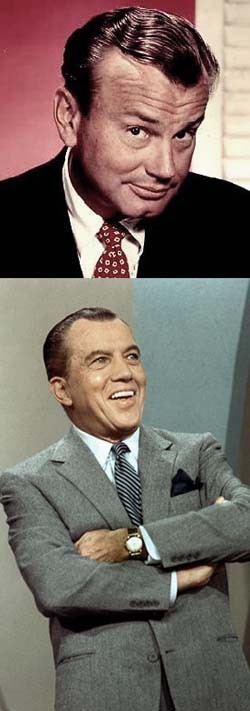 Paar had ever broadcast Beatles clips and Sullivan became the man who introduced the band to America. Paar believed this was blatant revisionism, but here his vanity kept him from understanding the obvious truth that film clips are nothing compared to a live performance. Besides, Paar didn’t like the Beatles’ music, and had used the film clips to joke about the band. It was only after they became a phenomenon that he publicly sought to usurp Sullivan’s credit.
Paar had ever broadcast Beatles clips and Sullivan became the man who introduced the band to America. Paar believed this was blatant revisionism, but here his vanity kept him from understanding the obvious truth that film clips are nothing compared to a live performance. Besides, Paar didn’t like the Beatles’ music, and had used the film clips to joke about the band. It was only after they became a phenomenon that he publicly sought to usurp Sullivan’s credit.
There were other occasions when the feud spilled into the open. For instance, Sullivan’s guests received several thousand dollars for their appearances, but Paar’s got a measly $320. He fought his network to try and change that, word got to the tabloids, and the tabs spun it as yet more personal animus between the two hosts, when in this case it could be argued Paar was standing up for his guests and the reputation of his show. But there was no doubt Paar and Sullivan hated each other. They were even talked into having a public debate, but it fell apart. At first, word was Sullivan had backed out, but a bit later CBS exec Douglas Edwards said it was actually Paar who had gotten cold feet. The news set Paar off. He spent nearly fifty minutes of The Tonight Show trashing Ed Sullivan. He began by facetiously describing his rival as a man who was “as honest as he is talented,” and ended by flatly calling him a liar.
The Paar-Sullivan rivalry only lost its steam when Parr retired, and Sullivan’s show declined and was finally axed June 6, 1971. Parr made a brief comeback in 1973, but quit for good shorty thereafter. None of us at Pulp Intl. are old enough to have seen the Paar-Sullivan blood feud, but there's plenty of text about it on the web to give a sense of what it was like. When we try to think of a comparable modern day dust-up between two relevant, powerful, and brilliant personalities we come up blank—and don't even try to put O’Donnell-Limbaugh in the same class. The Paar-Sullivan feud was a clash of beloved titans who, even in the midst of their battles, tried to entertain, educate, and elevate their audiences. American television hasn’t been the same since.




































































